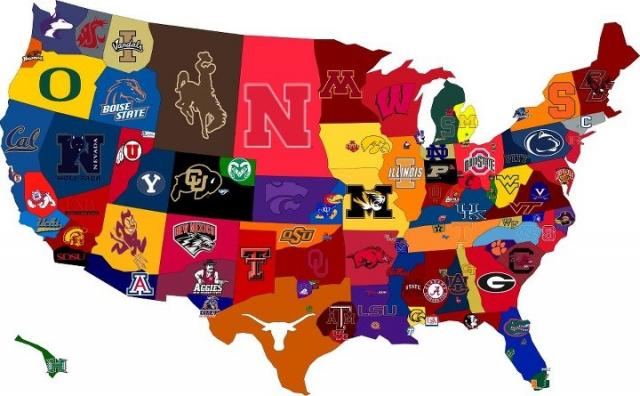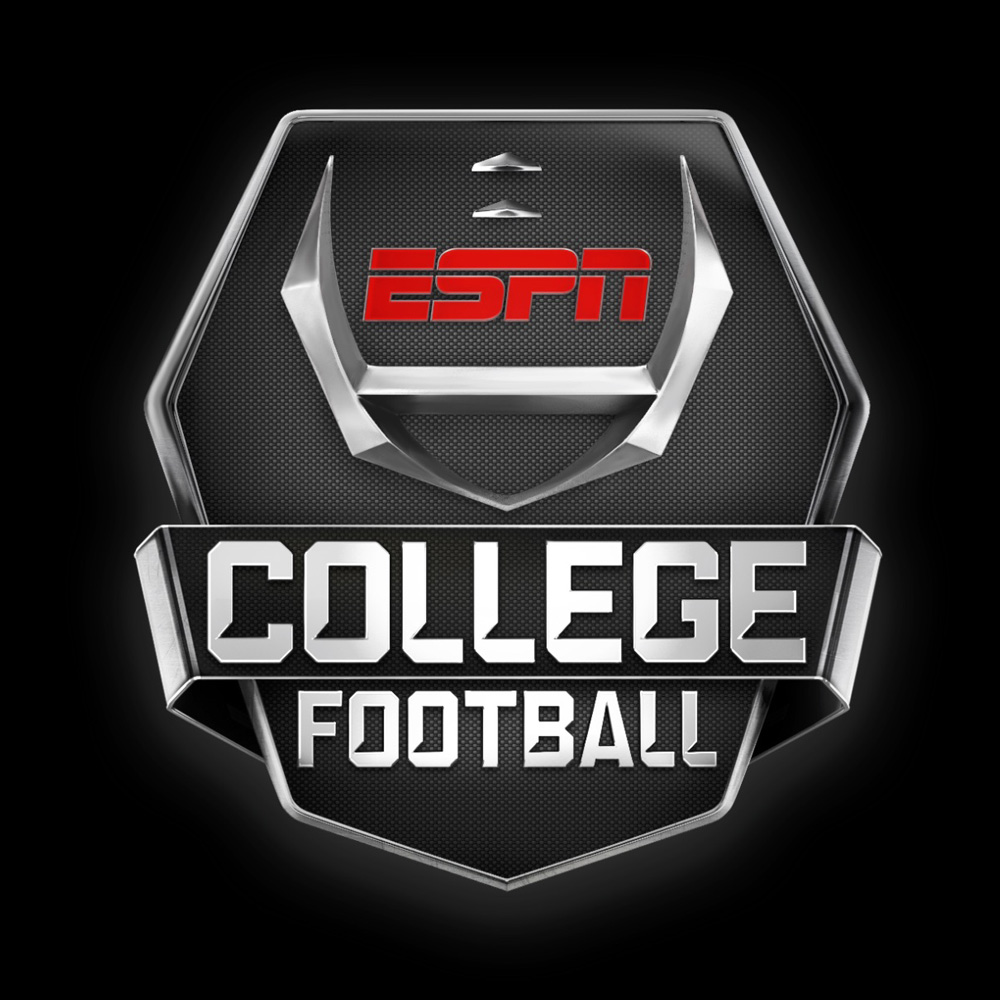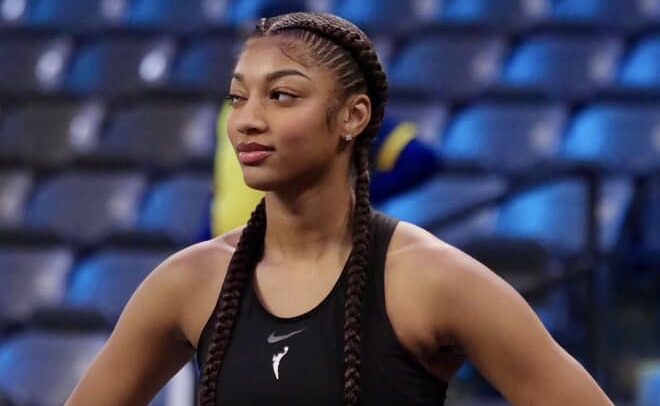
These ten different things were supposed to end college football; the game still stands.
nn
Headlines this summer spelled doom for college football in the eyes of my fans, writers, and pundits. Name, image, likeness contracts, and conference realignment will cause the game to collapse. This summer is not the first time big news around the sport spelled its demise. As it was during those times, the game still stands.
nn
In no specific order, here are ten things to end college football.
nn

10. Conferences negotiating their television deals.
nn
The first televised ,football game was in 1939 between Waynesburg and Fordham. From that first game until 1984, the NCAA negotiated contracts for the game of the week between television networks. The Oklahoma Board of Regents sued the NCAA for the rights of teams and conferences to negotiate their television deals with the networks.
nn
The NCAA’s argument for limiting television exposure? Television broadcasts negatively affect ticket sales. Not only is this not true, fans flock to stadiums across the country when they know their team is on a national broadcast. From white-outs at Penn State to a raucous crowd at Death Valley, fans show up and show out when their team is on national television.
nn
9. Notre Dame’s NBC Deal
nn
NBC has been the home of Notre Dame Football since 1991, after the Irish broke off from the now-defunct College Football Association (CFA). Notre Dame joined the CFA in 1976 with 67 other schools to pool their television rights. Notre Dame was unhappy with the CFA because of its emphasis on regional games, and the Irish are a national brand.
nn
After broadcasting games with Jefferson Pilot for five years, the Irish ,signed a deal with NBC worth $38 million. Notre Dame is a national brand and needs to be. The Irish have to recruit nationally to be relevant in the college football world; having a television contract that has allowed it to be in homes all over the country helps with recruiting.
nn
8. National Recruiting
nn
Recruiting has not always looked the way it does now. There was a time coaches recruited primarily in their backyard (i.e., their state) with some exceptions. Notre Dame has always recruited nationally, and Miami went outside of Florida to get players during the heyday of “The U.” However, national recruiting wasn’t what it is now.
nn
National recruiting is a way of life in today’s game. Some schools (ex. Nebraska) do not have a large in-state recruiting base and have always gone national. Now, everyone recruits nationally in some form or fashion.
nn
7. Multi-million dollar head coaching contracts
nn
Some contracts regulate the job market, and others set the market. Legendary football coach Bobby Bowden became the first college coach to have a contract with over a $ 1 million valuation. That contract set the market. The market was set again when former Florida head football coach Steve Spurrier became the first head coach with a million-dollar annual salary.
nn
These contracts were going to drive down the quality of college football. Coaches were going to move from job to job because of money. No one was going to stay at schools like Paterno or Bowden anymore. Coaches would hop programs to the highest bidder; that was the sentiment. That has not happened, exactly. Schools have been as quick to fire coaches as coaches have been apt to leave.
nn
These contracts have exposed the excessive amount of money football brings to many of these institutions without compensating the drivers of the income drivers.
nn
6. Name, Image, and Likeness
nn
When the Supreme Court ruled that players could be compensated for their name, image, and likeness, many decried the sport would descend into dirty recruiting and players becoming mercenaries, going to the schools with the best deals. While coaches and pundits can argue that some “collectives” are not using NIL as intended, the NCAA had years to create a policy to regulate it.
nn
When the courts ruled in the Ed O’Bannon case, the NCAA had to know that this day was coming, yet it did nothing to create a policy to help set parameters around NIL. The market has to regulate itself as a result. These collectives will eventually pay less to incoming freshmen players and decide how to go about compensating players.
nnhttps://www.youtube.com/watch?v=lMYWjoREbKM
5. Freshmen playing varsity
nn
On November 14, 1970, a chartered flight carrying 37 Marshall University football players and 37 members of the university staff and boosters crashed, killing everyone aboard. The University decided to play football and needed players. As a result, the University petitioned the NCAA to allow true freshmen to play varsity. The NCAA granted Marshall ,special permission to play freshmen in 1971.
nn
Freshman football allowed young players to adjust to college life and more challenging competition. Herschel Walker, Adrian Peterson, and Trevor Lawrence prove that there are freshmen ready for big-time college football.
nn
4. Conference realignment
nn
Conference realignment is a movie that we’ve seen before, which makes it surprising that fans and writers are up in arms about this current round of realignment. The Big 12 is a result of the realignment, and the Big East as originally constituted no longer exists, with many of its charter members now part of the ACC.
nn
Conference movement also happens frequently at the Group of Five level. The WAC no longer exists as it once did. No conference experiences more shake-ups than Conference USA. This current iteration of realignment seems to have college football headed toward two or three superconferences, but we will still watch.
nn
3. “The Great Arms Race.”
n
Years ago, I visited Google’s offices in Chicago, Illinois. It had everything an employee would ever want in a workplace. The offices had breakfast, lunch, and dinner catered for employees, and the meals were free. There were locker rooms with showers and a relationship with the local health club until the company completed the onsite gym. It was as if Google wanted you to live there. If you didn’t, they were converting a warehouse into condos for employees to rent.
nn
Many of these football facilities are similar. Day dorms, cafeterias, classrooms, golf courses, and movie theaters exist. In addition, many are on the far edge of many campuses. Few football players have the classic collegiate experience anymore. It is hard to say whether or not it truly helps to recruit, but no one wants to play football anywhere the facilities are second-rate.
nnhttps://www.youtube.com/watch?v=afru_Cw3TOg
2. The BCS
nn
College Football has been on a quest for its National Champion to be the best team in the country that season truly. The BCS was an effort for #1 to play #2 for the National Title. This system would eliminate split National Championships, and the title would be decided on the field. College football tried this before the BCS with the bowl coalition, but not all the bowls wanted to participate.
nn
The big solution with the BCS soon became the problem, the computers. The selection of the top two teams did have a human element; the system did use the AP and Coach’s polls as part of the equation. However, the BCS’ demise was coming when Alabama and LSU played for the National Title in 2012 after playing in the regular season.
nnn
1. College Football Playoff
nn
This is the current system to determine a “true National Champion” after the BCS. A committee selects the top four teams in the country. Those who took issue with the playoff complained that it would make college football too much like the pro game.
nn
First, college football has been a developmental league for the NFL for decades. Second, the playoff could make the game less regional and more national, which most of the higher-ups in college football want.
n


